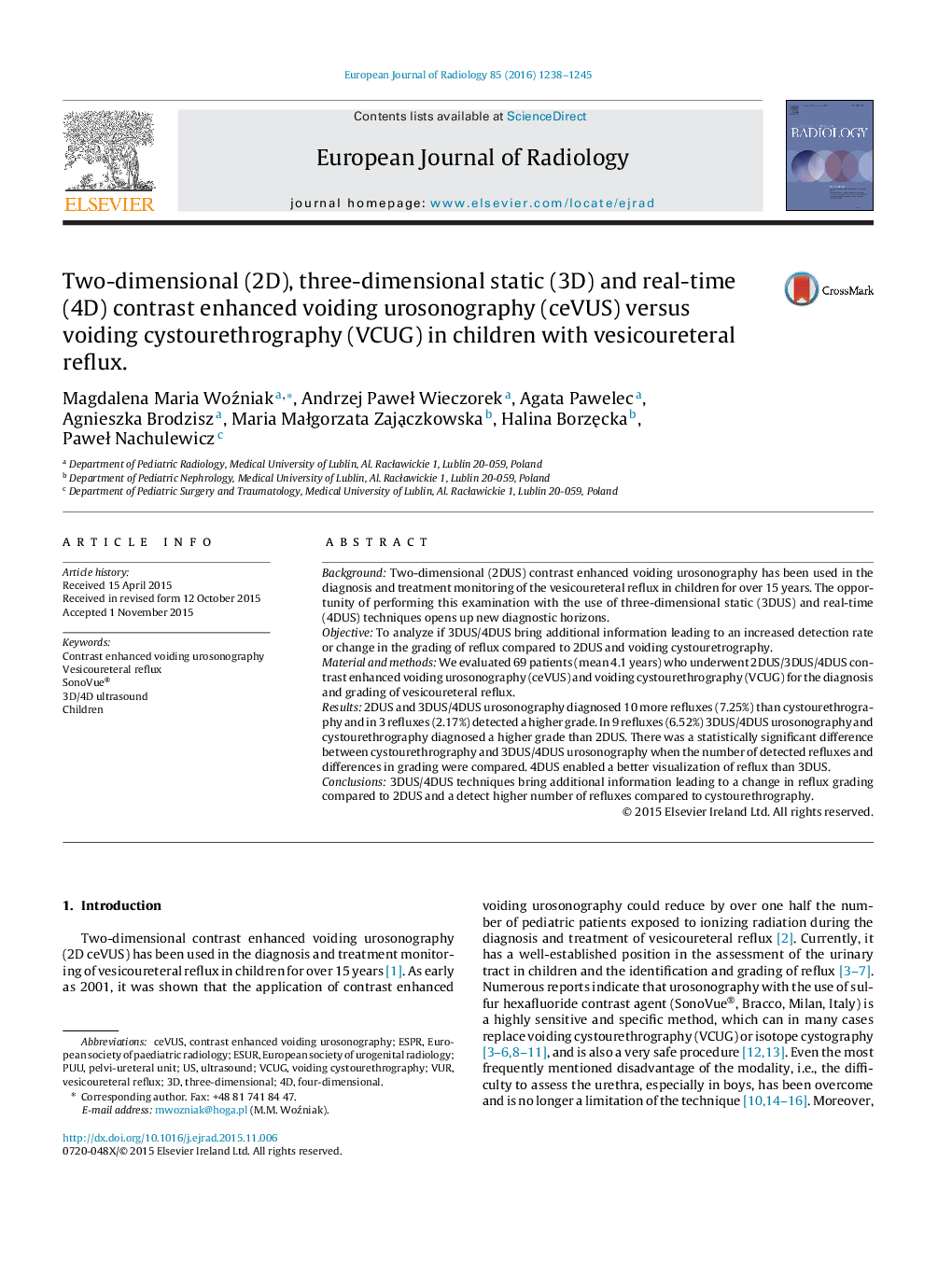| کد مقاله | کد نشریه | سال انتشار | مقاله انگلیسی | نسخه تمام متن |
|---|---|---|---|---|
| 4224838 | 1609741 | 2016 | 8 صفحه PDF | دانلود رایگان |

• 3DUS/4DUS contrast enhanced voiding urosonography (ceVUS) detects a higher number of refluxes compared to voiding cystourethrography (VCUG).
• 3DUS/4DUS ceVUS detects the same number of refluxes compared to 2DUS ceVUS, however, the 3DUS/4DUS techniques diagnose higher grades than 2DUS.
• 3DUS/4DUS offers multi-dimensional volumetric presentation of the reflux facilitating grading and increasing the quality of the documentation.
• 4DUS as a real-time dynamic modality visualizes reflux better than 3DUS, and thus can be used as the sole volumetric technique preceded by 2DUS.
BackgroundTwo-dimensional (2DUS) contrast enhanced voiding urosonography has been used in the diagnosis and treatment monitoring of the vesicoureteral reflux in children for over 15 years. The opportunity of performing this examination with the use of three-dimensional static (3DUS) and real-time (4DUS) techniques opens up new diagnostic horizons.ObjectiveTo analyze if 3DUS/4DUS bring additional information leading to an increased detection rate or change in the grading of reflux compared to 2DUS and voiding cystouretrography.Material and methodsWe evaluated 69 patients (mean 4.1 years) who underwent 2DUS/3DUS/4DUS contrast enhanced voiding urosonography (ceVUS) and voiding cystourethrography (VCUG) for the diagnosis and grading of vesicoureteral reflux.Results2DUS and 3DUS/4DUS urosonography diagnosed 10 more refluxes (7.25%) than cystourethrography and in 3 refluxes (2.17%) detected a higher grade. In 9 refluxes (6.52%) 3DUS/4DUS urosonography and cystourethrography diagnosed a higher grade than 2DUS. There was a statistically significant difference between cystourethrography and 3DUS/4DUS urosonography when the number of detected refluxes and differences in grading were compared. 4DUS enabled a better visualization of reflux than 3DUS.Conclusions3DUS/4DUS techniques bring additional information leading to a change in reflux grading compared to 2DUS and a detect higher number of refluxes compared to cystourethrography.
Journal: European Journal of Radiology - Volume 85, Issue 6, June 2016, Pages 1238–1245